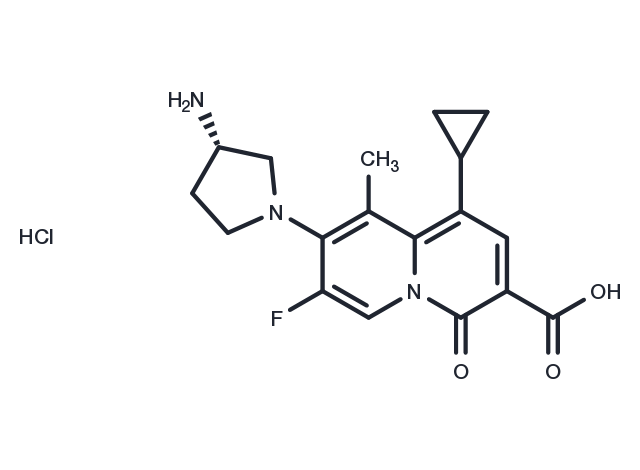Powder: -20°C for 3 years | In solvent: -80°C for 1 year


ABT-719 is a 2-pyridinone antimicrobial agent that is more effective against Enterococcus faecalis strains than ciprofloxacin and vancomycin, which showed resistance to ciprofloxacin and vancomycin covering a range of MIC.

| Pack Size | Availability | Price/USD | Quantity |
|---|---|---|---|
| 25 mg | 6-8 weeks | $ 1,670.00 | |
| 50 mg | 6-8 weeks | $ 2,180.00 | |
| 100 mg | 6-8 weeks | $ 2,800.00 |
| Description | ABT-719 is a 2-pyridinone antimicrobial agent that is more effective against Enterococcus faecalis strains than ciprofloxacin and vancomycin, which showed resistance to ciprofloxacin and vancomycin covering a range of MIC. |
| Synonyms | A-816719.1, A 816719.1, ABT-719, ABT719, ABT 719, ABT-719 hydrochloride |
| Molecular Weight | 381.83 |
| Formula | C18H21ClFN3O3 |
| CAS No. | 162763-53-3 |
Powder: -20°C for 3 years | In solvent: -80°C for 1 year
You can also refer to dose conversion for different animals. More
bottom
Please see Inhibitor Handling Instructions for more frequently ask questions. Topics include: how to prepare stock solutions, how to store products, and cautions on cell-based assays & animal experiments, etc.
ABT-719 HCl 162763-53-3 A-816719.1 A 816719.1 ABT 719 Hydrochloride ABT-719 ABT719 Hydrochloride ABT-719 Hydrochloride ABT719 ABT719 HCl ABT 719 ABT 719 HCl ABT-719 hydrochloride inhibitor inhibit
